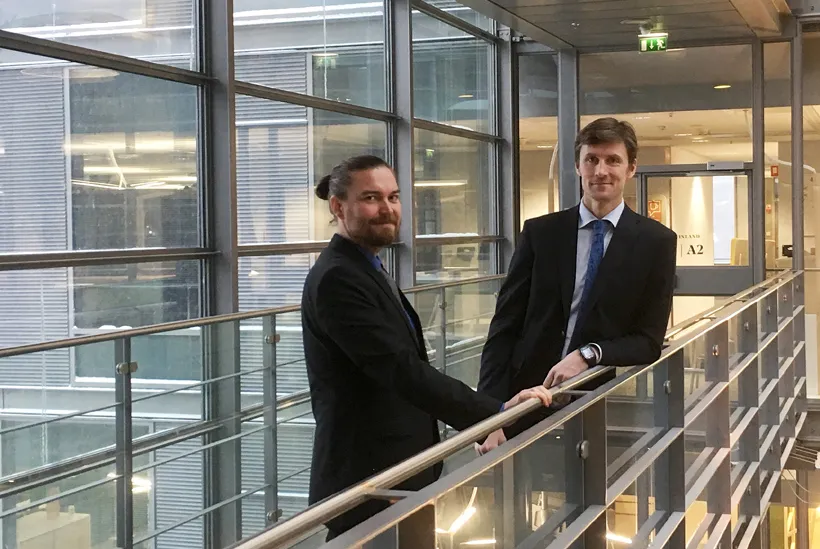Responsibility and transparency guide the assessment of environmental and human rights risks

When financing exports, Finnvera considers environmental and social impacts as part of the overall risk assessment of the projects financed. The assessment of the environmental and social risks plays an important role in financing projects carried out abroad. At Finnvera, assessments are conducted by Lauri Etelämäki (on the right), Environmental Adviser, and Timo Hankala, Human Rights Adviser, who started working in this position in autumn 2017. The assessment is a concrete way of ensuring that the company operates responsibly, and work is driven by the aim of achieving transparency.
What does your job description involve?
Lauri and Timo: We assess and screen the environmental and human rights risks of projects. First, we get to know the projects on the basis of the information we have received and assess risks potentially related to them.
After this, we make an on-site visit, if necessary, and assess what kinds of management approaches the sites have for managing risks. In 2017, we conducted an actual environmental and human rights risk assessment for approximately ten projects. If a project involves excessive risks, that usually becomes evident right at the beginning of the assessment. We come across at most a couple of cases like this per year.
Which aspect of your work do you like the most?
Timo: As Human Rights Adviser, I feel my work is important as I contribute to responsibility in projects. Moreover, each project is one of a kind even though they are assessed using the same standards.
Lauri: I agree with Timo, and I would also like to add that as my work is so concrete I can clearly see the results I achieve. For me personally, a great source of motivation is the impacts that the projects have. Some projects are enormous and offer a chance to exert more extensive influence on the operating methods of the sector in question, even at a national level.
Which is the most memorable project you have been involved in?
Timo: The project that enabled us to exert influence on the operating methods of a major state company. It is truly rewarding to see how our work can lead to big changes.
Lauri: We use external consultants in risk assessment, and sometimes there may be differing views about the selection of consultants in projects. I remember a project where there was heated debate about replacing the consultant with another one, but, in the end, our view was listened to. The consultant we selected has managed to significantly improve the operating methods in the project and even in the company when it comes to environmental and social issues.
What is your greatest professional success?
Lauri: I think my greatest success is the project I just mentioned, where the consultant’s assessment can be said to have changed the company’s attitudes towards environmental and social issues.
Timo: I have been in my current role for such a short period of time that it is still difficult to answer this question. In my earlier Senior Legal Counsel role at Finnvera, I was involved in a project where our power plant project looked—in a positive sense—completely different, both inside and outside, from neighbouring power plants. That made a lasting impression on me.
Can you see certain broader trends related to project reviews or responsible financing?
Timo: In the field of human rights, a clear trend is the increasing transparency requirements, especially from NGOs. In addition, human rights requirements for enterprises and projects are constantly evolving and becoming more extensive. The hard-to-measure management of risks related to human rights and a systematic approach to it are still at the development stage.
Lauri: As far as different sectors are concerned, there seems to be quite a mining boom going on, particularly in Latin America. Mining projects are very extensive and among the most demanding projects. Their realisation requires a lot of area, which may have a very significant impact on biodiversity and the life of local people.
The project requirement level also keeps on rising, especially as projects grow in size and move to high-risk countries and as Finnvera’s risk management develops. This requires constantly more from us experts.
Further information:
Policy for reviewing the environmental and social impacts of projects
